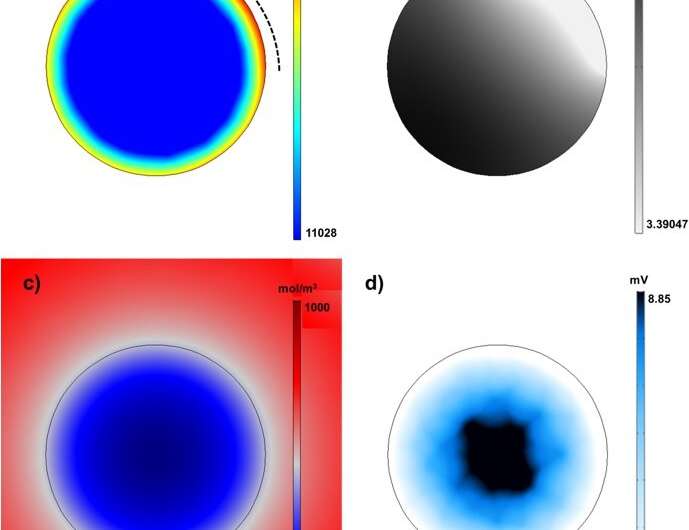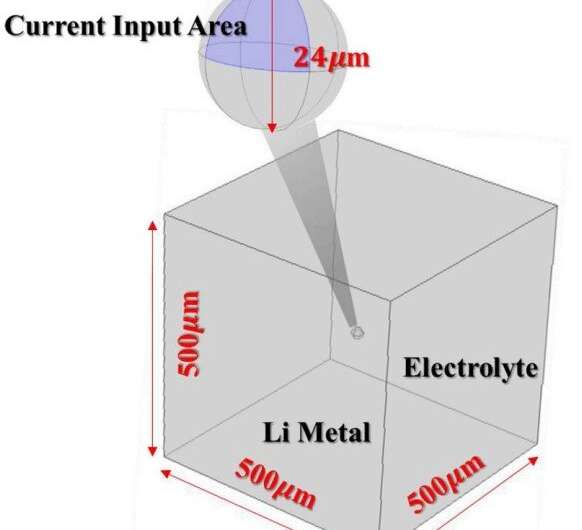Development of 3-D particle model for single particles in battery electrodes

A model with a 3-D observation of micrometer-sized particles in a cell has been developed. Through the analysis and research of micrometer-sized particles in a cell, this model is expected to enhance energy efficiency of cells.
DGIST announced that Professor Yong Min Lee's team in the Department of Energy Science & Engineering developed a "micron single particle electrochemical model" that can estimate the electrochemical properties of a single particle of electrode active materials in 3-D. The 3-D observations of the single particles of electrode active materials, which are difficult to identify in an experiment, are expected to be applied to research on electrochemical phenomena and particle designs that enhance cell efficiency.
Although a secondary cell is commonly used as the power source of electric vehicles, it is still not as efficient an internal combustion engine. While efficiency can be improved by increasing the energy density of the cells, R&D has not been actively carried out due to the limitations in precise analysis technology.
Professor Lee's team posited that the energy density of a cell can be enhanced through the design optimization of electrode active materials in a cell. Then they sought a way to examine the micrometer-sized single particles of electrode active materials and developed electrochemical model that can conduct 3-D analysis on the single particles.

Unlike the existing model that focused on the cell electrode, the model developed by Professor Yong Min Lee's team focused on the single particles of active materials that compose the electrode. By doing so, the team took another step closer to fundamentally increase cell efficiency through accurate analysis of the properties and characteristics of 3-D single particles in a model. Since it can have 3-D analysis of particles, the model is especially expected to be applied widely in research to design the single particles of electrode active materials in a cell.
Regarding this research, Professor Yong Min Lee in the Department of Energy Science and Engineering said "Comparing to previous works, our model can look into what happens within a single particle. As a result, it provides an innovative way in designing micrometer-sized particles. Our next goal is to apply this electrochemical model to improve the cell efficiency of electric vehicles."
More information: Jihun Song et al, 3D electrochemical model for a Single Secondary Particle and its application for operando analysis, Nano Energy (2019). DOI: 10.1016/j.nanoen.2019.05.087
Journal information: Nano Energy
Provided by DGIST (Daegu Gyeongbuk Institute of Science and Technology)



















